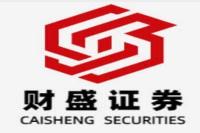China's Economic Pulse: A Deep Dive into Recent Trends and Insights
Meta Description: Analyzing China's latest economic indicators, including CPI, industrial production, bond yields, and key industry developments, with expert insights and predictions for the future. Keywords: China Economy, CPI, Industrial Production, Bond Yields, Humanoid Robots, New Energy Vehicles, Economic Policy, Macroeconomic Trends
Are you captivated by the intricate dance of global economics? Do you yearn to understand the subtle shifts and powerful currents shaping China's economic landscape? Then buckle up, because we're about to embark on a thrilling journey through the latest data, revealing the hidden stories and untold narratives behind the numbers. This isn't just a dry recitation of statistics; it's a vibrant tapestry woven from official reports, market whispers, and seasoned insights, painting a vivid picture of China's economic pulse. We'll dissect the recent CPI figures, explore the fascinating rise of humanoid robots, delve into the booming new energy vehicle (NEV) sector, and uncover the strategic moves driving macroeconomic policy. Think of it as your front-row seat to witnessing the dynamism of the world's second-largest economy, presented with a level of detail and analysis that you won't find anywhere else. Prepare to be amazed by the sheer complexity and potential of this economic powerhouse, and discover how these trends could reshape not only China's future but the global economic order itself! Get ready for a deep dive into the heart of China's economic engine – you won't want to miss this!
China's Macroeconomic Policy: A Balancing Act
China's economic policymakers are walking a tightrope, striving for a delicate balance between stimulating growth and managing risks. Recent pronouncements from the Central Politburo emphasized a more proactive macroeconomic policy, including more aggressive fiscal measures and a moderately loose monetary policy. This strategy aims to boost domestic demand, a key driver of economic expansion. The Politburo's focus on technological and industrial innovation highlights the country's commitment to upgrading its economy and reducing reliance on traditional manufacturing. Simultaneously, there's a concerted effort to stabilize the real estate and stock markets, vital components of the financial system. This "policy combination punch," as some analysts call it, seeks to enhance macroeconomic control's foresight, targeting, and efficacy. It's a high-stakes game, and the success of this strategy will significantly determine China's economic trajectory in the coming years. The government's commitment to fostering collaboration with international economic organizations also underscores its vision of contributing to global prosperity. This isn't just about domestic growth; it's about China playing a leading role in shaping the future of the global economy.
Inflation and Industrial Production: A Closer Look at the Numbers
November 2024 saw the national Consumer Price Index (CPI) rise by a modest 0.2% year-on-year, while the year-to-date average stood at 0.3%. This relatively low inflation rate indicates a stable price environment, although this could change depending on future policy decisions and global economic trends. The picture becomes more nuanced when examining Producer Price Index (PPI) figures. The PPI for November declined by 2.5% year-on-year, a decrease that's slightly smaller than the previous month's drop. This suggests some stabilization in factory-gate prices. Despite these figures, the overall economic situation remains complex. While inflation remains manageable for now, policymakers are closely monitoring various economic indicators and may adjust policy accordingly. It’s a dynamic situation, and the interplay between CPI and PPI will continue to shape the outlook for China's economy.
Bond Yields and Market Sentiment: A Sign of Confidence?
The 10-year government bond yield dipping below the 2.0% mark is a significant event, signaling potentially reduced borrowing costs for businesses and a general sense of confidence in the stability of the Chinese economy. This lower yield reflects a flight to safety, suggesting investors are less worried about inflation and economic uncertainty. This is noteworthy, particularly considering the global economic climate. However, it's crucial to analyze this in conjunction with other macroeconomic indicators. The lower yield could also indicate reduced investor expectations for future growth, so it's not a simple case of good news across the board.
The Booming NEV Sector: Sustainable Growth or Bubble?
China's new energy vehicle (NEV) sector is on fire! November's sales figures show a remarkable 49.6% year-on-year increase in wholesale volume, reaching 1.438 million units. Retail sales similarly surged, indicating strong consumer demand. This sustained growth underscores the country's commitment to electric mobility and its vast potential. The sheer scale of this growth is both impressive and concerning. Is this rapid expansion sustainable, or is there a risk of a market correction? Only time will tell. This rapid expansion raises concerns about potential bottlenecks in the supply chain, charging infrastructure, and the overall sustainability of this growth rate. Further analysis is needed to determine whether this is a truly booming market or if it's experiencing a temporary surge.
Humanoid Robots: The Dawn of a New Era?
The recent surge in interest in humanoid robots in China is captivating. Industry insiders suggest that 2025 could be the year of commercialization for these advanced machines. The excitement is palpable, with major investment pouring into this emerging sector. However, it's important to approach this with a degree of realism. While the potential benefits are immense, there are still many challenges to overcome, such as technological hurdles, cost considerations, and ethical implications. The key components in the humanoid robot supply chain, such as dexterous hands, joints, and gearboxes, are attracting significant attention from investors, signaling a potential rush to acquire leading companies in these essential areas.
Key Industry Developments: A Snapshot of Innovation
Several significant developments paint a picture of ongoing innovation across various sectors:
- Semiconductor advancements: Companies like Hua Da Jiu Tian are positioning themselves as global players in EDA (Electronic Design Automation), while others are making strides in producing advanced materials for chip manufacturing.
- Biomedical breakthroughs: The success of clinical trials for implantable brain-computer interfaces, allowing for brain-controlled actions, highlights the rapid progress being made in this field.
- Material science breakthroughs: The development and successful testing of new types of lithographic materials represent a significant step towards greater independence in the semiconductor industry.
- AI and Robotics: Significant breakthroughs are being achieved in artificial intelligence and robotics, with companies developing sophisticated AI-powered robots for various industrial applications.
Frequently Asked Questions (FAQs)
Q1: How stable is China's economy in the current global climate?
A1: China's economy faces complex challenges, but the government's proactive policies aim to address these through a combination of fiscal and monetary tools. The stability of the economy depends significantly on the success of these policies and global economic factors.
Q2: What are the major risks facing the Chinese economy?
A2: Potential risks include global economic slowdown, real estate market volatility, and potential challenges in managing the rapid expansion of certain sectors like NEVs.
Q3: Is the low bond yield a positive sign?
A3: While a low yield can indicate investor confidence and lower borrowing costs, it can also signal reduced growth expectations. It's essential to consider it within the broader economic context.
Q4: What is the government's role in stabilizing the economy?
A4: The government is actively using fiscal and monetary policies, combined with targeted interventions in specific sectors to stimulate domestic demand, boost innovation, and mitigate risks.
Q5: How significant is the NEV sector's growth?
A5: The NEV sector's growth is remarkable but its sustainability requires further analysis, considering potential supply chain constraints and market saturation.
Q6: What's the future outlook for humanoid robots in China?
A6: The future is promising, but challenges remain, particularly in terms of technological maturity, costs, ethical considerations, and market acceptance.
Conclusion: Navigating a Complex Economic Landscape
China's economic landscape is undeniably complex, a dynamic interplay of governmental strategies, industry innovation, and global market forces. While the recent data points to relative stability and growth in certain sectors, careful monitoring and insightful analysis are essential to fully comprehend the nuances of this powerful economy. The government's proactive approach, coupled with private sector dynamism, suggests a resilient economic foundation. However, navigating the potential challenges effectively will be crucial in determining China's economic trajectory in the years to come. The journey continues, and we'll be here to report on every twist and turn.



